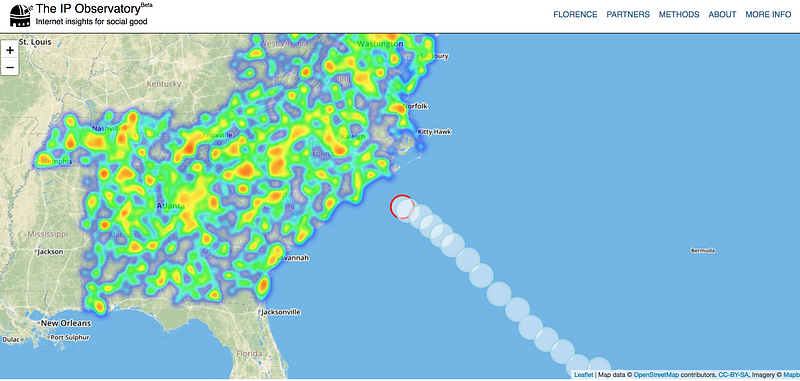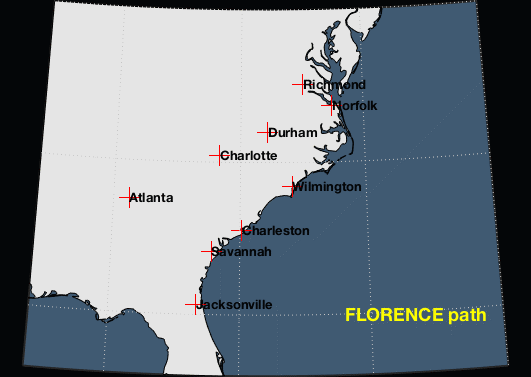Measuring the Florence’s Impact on Internet Infrastructure in Real-Time

Our team at the IP-Observatory has successfully implemented an IP scanning routine that allows us to monitor Hurricane Florence’s impact on internet infrastructure.
In particular, we are using (close to) real-time information about the online/offline activity of over 200,000 carefully selected, unique IP-addresses in the potentially affected areas on the US East Coast. Our infrastructure checks in with these addresses only every few minutes, ensuring that overall additional traffic loads to the area are minimised.We combine measurements of whether an IP address is online or offline with its geo-location and map the changes of Internet activity at an hourly rate. The results are presented in an animated map.
Our aim is to study the impact of Florence’s passage on the ICT infrastructure of affected regions.
The figure below is a visualisation of the data collected so far. orange indicates a degradation level 70% while red indicates that the local ICT infrastructure is degraded by 95% or more.

Of course, this approach does not provide an accurate reflection of the actual damages on the ground. However, the idea is to provide a first picture of where Florence’s path has resulted in actual impact on society. It can be used as the very first input to assess the geographic extent of Hurricane Florence and thereby potentially offer useful information for first responders.
Monitoring Post-Disaster Recovery
We will continue monitoring the affected areas over an extended period after the Hurricane has ended to monitor the recovery of ICT infrastructure in the affected areas.
Measure Economic and Financial Impacts of Disasters using Alternative Data
This project also shows how alternative data can be used to measure the technological, financial and economic impacts of natural disasters in very granular detail.
Our team has recently established KASPR Datahaus, an alternative data start-up that has developed a method to scan and aggregate large amounts of IP data at any location and time frequency.
KASPR’s critical incidence data products provide insights about the development of internet infrastructure in affected areas and allow a comparison to unaffected areas in close proximity (‘control’ areas).
Pre- and post scans allow a within and between comparison of the impact, while continued scanning during the aftermath of the event, measure the speed and extent of post-disaster recovery.
This data can generate valuable insights for the finance and insurance sector who are the the ones highly affected by natural disasters such as Hurricane Florence.
In addition, investors and public decision makers are able to monitor and evaluate the speed and outcomes of recovery investments.
[Disclaimer: I am a co-founder of the IP-Obervatory and KASPR Datahaus PTY LTD]